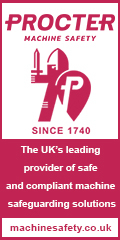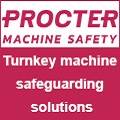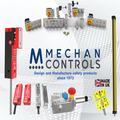
Posted to News on 15th Aug 2012, 18:54
Robotic Nation? Exploring the myths of Robotic Automation
Negativity regarding the cost, reliability and personnel requirements of robotic automation is often a common stumbling block when offering a robotic-based system for a manufacturing process
The misconception among many companies when investigating industrial robotics in manufacturing can often be down to inaccurate cost justification, fears of additional training costs and a lack of awareness of what is available in the current market. The reality is that the price of robots has been declining for the last 10 years, with major steps forward in the technology. Today, robotic systems are faster, more accurate and simpler to set up. They are also becoming a practical alternative for small batch operations when combined with flexible feed systems and industrial vision, giving "future proof' automation.
Companies that utilise 24/7 operations can often keep ownership cost low by gaining the benefits of higher reliability, lower maintenance costs and flexibility of robotic systems. It has been reported that most robotic systems generate a ROI in less than 18 months - some even sooner.
The true costs of a traditional pneumatic-based machine compared with a flexible robotic system can be significant when considering product changeover and reliability. RNA offer standard systems and bespoke robotic systems designed and built for each client's specific application.
Robotic systems are being successfully employed in numerous markets and industrial applications including automotive, consumer goods, electronics, medical, marine, semiconductor, and food and drinks. The reliability of a robot in production is measured using Mean Time Between Failure (MTBF). This measurement is based on the production hours a robot will fulfil before failing. Robots are proven to provide 50,000-100,000+ hours MTBF of operation without failure - equivalent to 25-40 man-years. Let us say a plant produces plastic moulding products on average 9 hours a day, five days a week. This comes up with a total operation time of 2340 hours per year. If we divide 100,000 by 2340 we will arrive at an average robot life of 43 years.
The use of robotic systems simplifies part handling to minimise total number of system mechanical components. As an example, using a vision-guided robot to pick component parts from a moving conveyor eliminates accumulating and orienting, reducing part jamming and part changeover with conventional feeding.
Robotic systems are no longer associated only with the automotive industry and are proven for most applications within clean rooms and food processing, often in hot, cold, dusty, noisy or wet conditions. Their reliability is also backed up by the growing demand for refurbished systems, or for the robot to be integrated with a completely different machine or process.
Robotic system operation
A common misconception is that operating a robotic system is a complex and difficult task. Robotic systems are not as complicated as often thought. No prior knowledge is required for an operator to run the system - it usually takes four to five days of training on site for operators to feel comfortable with the system. Within a month it becomes second nature, but in some complex applications additional days of training may be recommended.
Today's robotic systems are PLC driven, and are accompanied with an operator panel. The panel has an easy-to-use interface with simple, recognisable navigation. Operators can start and stop a robotic system easily; make speed modifications; troubleshoot problems; and back up original programs if required, much like a home computer. Also, most robotic systems today feature remote diagnostics and programming to minimise loss of production and the need for site visits from service engineers.
As graphical user interface technology advanced significantly in recent years, operators can learn robot programming even more quickly and effectively. It is often said that if you can use a games console then you can use a robot teach pendant.
Robotic systems are well suited to jobs that are dirty, monotonous, difficult or hazardous. They free employees from the danger of many tasks and reduce H&S issues. The misconception of job losses to robotics is due to lack of awareness; in most cases, new jobs are also being created in robot installation and maintenance. The installation of robotic systems provides employee training opportunities that can lead to higher levels of skill, better pay and new positions with the company. One key factor for success is to involve all employees early in the project and look at the additional tasks a robot can achieve within its main task cycle time.
Case study: high-speed palletising
A global manufacturer in the medical device industry had a requirement to automate a new product after production and place into trays. The customer's production line delivers more than 10,000 pieces per hour, and as well as the high output the line is not continuous and is further complicated by the product being made in various sizes.
Manufacturing takes place inside a Class 8 clean room where space is limited, so equipment has to be as small as possible with good access for operators.
The component is taken from the production line with a handling unit fitted with an 8-head vacuum unit which places them into trays. Changeover for the complete tray is less than 2 seconds; a rotary table is used to transport the trays due to the short cycle time.
Prior to tray loading, the product is also marked with a bar code on a paper strip, applied, and the code verified with a vision system. The populated tray is also checked again with a vision system to check for positional accuracy of the product.
The benefits of the system are low cost, a small and compact footprint, high speed and good operator accessibility. The system can also be expanded for higher outputs and more stringent clean room requirements.
More information about RNA RoboMat palletising systems can be found at www.rnaautomation.com.
Want the latest machine building news straight to your inbox? Become a MachineBuilding member for free today >>
Castle Bromwich Business Park
Tameside Drive
B35 7AG
UNITED KINGDOM
44 121 749 2566

















